Enhanced Tight Oil Recovery by Volume Fracturing in Chang 7 Reservoir: Experimental Study and Field Practice
Abstract
1. Introduction
2. Characterization of Chang 7 Tight Oil Reservoir
2.1. Geological Characteristics
2.2. Characteristics of Hydrocarbon Source Rocks
2.3. Physical Properties of Reservoir Formations
3. Experimental Section for Tight Oil Recovery in Pore-Fracture Dual Media
3.1. Flow Conductivity of Pore-Fracture Media and Its Effects on Tight Oil Recovery
3.2. Effect of Imbibition on Oil Recovery in Fractured Tight Oil Reservoir
4. Field Practice of Volume Fracturing Treatment
4.1. Field Development Stages in the Chang 7 Reservoir
4.2. Tight Oil Production in Volume-Fracturing-Treated Wells
5. Conclusions
Author Contributions
Funding
Acknowledgments
Conflicts of Interest
References
- Wei, M.Q.; Duan, Y.G.; Dong, M.Z.; Fang, Q.T.; Dejam, M. Transient production decline behavior analysis for a multi-fractured horizontal well with discrete fracture networks in shale gas reservoirs. J. Porous Media 2019, 22, 343–361. [Google Scholar] [CrossRef]
- Vengosh, A.; Jackson, R.B.; Warner, N.; Darrah, T.H.; Kondash, A. A critical review of the risks to water resources from unconventional shale gas development and hydraulic fracturing in the United States. Environ. Sci. Technol. 2014, 48, 8334–8348. [Google Scholar] [CrossRef] [PubMed]
- Wang, Q.; Chen, X.; Jha, A.N.; Rogers, H. Natural gas from shale formation—The evolution, evidences and challenges of shale gas revolution in United States. Renew. Sustain. Energy Rev. 2014, 30, 1–28. [Google Scholar] [CrossRef]
- Dong, D.Z.; Wang, Y.M.; Li, X.J.; Zou, C.N.; Guan, Q.Z.; Zhang, C.C.; Huang, J.L.; Wang, S.F.; Wang, H.Y.; Liu, H.L.; et al. Breakthrough and prospect of shale gas exploration and development in China. Nat. Gas Ind. B 2016, 3, 12–26. (In Chinese) [Google Scholar] [CrossRef]
- Wang, J.J.; Wang, B.E.; Li, Y.J.; Yang, Z.H.; Gong, H.J.; Dong, M.Z. Measurement of Dynamic Adsorption-Diffusion Process of Methane in Shale. Fuel 2016, 172, 37–48. [Google Scholar] [CrossRef]
- Wang, J.J.; Dong, M.Z.; Yang, Z.H.; Gong, H.J.; Li, Y.J. Investigation of methane desorption and its effect on the gas production process from shale: Experimental and mathematical study. Energy Fuel. 2017, 31, 205–216. [Google Scholar] [CrossRef]
- Zhao, X.G.; Kang, J.L.; Lan, B. Focus on the development of shale gas in China—Based on SWOT analysis. Renew. Sustain. Energy Rev. 2013, 21, 603–613. [Google Scholar] [CrossRef]
- Zhao, Y.L.; Zhang, L.H.; Luo, J.X.; Zhang, B.N. Performance of fractured horizontal well with stimulated reservoir volume in unconventional gas reservoir. J. Hydrol. 2014, 512, 447–456. [Google Scholar] [CrossRef]
- Mao, R.; Feng, Z.; Liu, Z.; Zhao, Y. Laboratory hydraulic fracturing test on large-scale pre-cracked granite specimens. J. Nat. Gas Sci. Eng. 2017, 44, 278–286. [Google Scholar] [CrossRef]
- Bohloli, B.; De Pater, C.J. Experimental study on hydraulic fracturing of soft rocks: Influence of fluid rheology and confining stress. J. Nat. Gas Sci. Eng. 2006, 53, 1–12. [Google Scholar] [CrossRef]
- Vidic, R.D.; Brantley, S.L.; Vandenbossche, J.M.; Yoxtheimer, D.; Abad, J.D. Impact of shale gas development on regional water quality. Science 2013, 340, 1235009. [Google Scholar] [CrossRef] [PubMed]
- Su, Y.L.; Zhang, Q.; Wang, W.D.; Sheng, G.L. Performance analysis of a composite dual-porosity model in multi-scale fractured shale reservoir. J. Nat. Gas Sci. Eng. 2015, 26, 1107–1118. [Google Scholar] [CrossRef]
- Su, Y.L.; Sheng, G.L.; Wang, W.D.; Zhang, Q.; Lu, M.J.; Ren, L. A mixed-fractal flow model for stimulated fractured vertical wells in tight oil reservoirs. Fractals 2016, 24, 1650006. [Google Scholar] [CrossRef]
- Rahm, D. Regulating hydraulic fracturing in shale gas plays: The case of Texas. Energy Policy 2011, 39, 2974–2981. [Google Scholar] [CrossRef]
- Hummel, N.; Shapiro, S.A. Nonlinear diffusion-based interpretation of induced microseismicity: A Barnett Shale hydraulic fracturing case study nonlinear diffusion and fracturing of shales. Geophysics 2013, 78, B211–B226. [Google Scholar] [CrossRef]
- Blanton, T.L. An experimental study of interaction between hydraulically induced and pre-existing fractures. In Proceedings of the SPE Unconventional Gas Recovery Symposium, Pittsburgh, PA, USA, 16–18 May 1982; Society of Petroleum Engineers: Pittsburgh, PA, USA, 1982. [Google Scholar] [CrossRef]
- Maity, D.; Ciezobka, J. An interpretation of proppant transport within the stimulated rock volume at the hydraulic-fracturing test site in the Permian Basin. SPE Reserv. Eval. Eng. 2019, 22, 477–491. [Google Scholar] [CrossRef]
- Cipolla, C.L.; Berntsen, B.A.; Moos, H.; Ginty, W.R.; Jensen, L. Case Study of Hydraulic Fracture Completions in Horizontal Wells, South Arne Field Danish North Sea. In Proceedings of the SPE Asia Pacific Oil and Gas Conference and Exhibition, Brisbane, Australia, 16–18 October 2000; Society of Petroleum Engineers: Brisbane, Australia, 2000. [Google Scholar] [CrossRef]
- Luo, S.; Neal, L.; Arulampalam, P.; Ciosek, J.M. Flow regime analysis of multi-stage hydraulically-fractured horizontal wells with reciprocal rate derivative function: Bakken case study. In Proceedings of the Canadian Unconventional Resources and International Petroleum Conference, Calgary, AB, Canada, 19–21 October 2010; Society of Petroleum Engineers: Calgary, AB, Canada, 2010. [Google Scholar] [CrossRef]
- Li, H.T.; Deng, J.G.; Liu, W.; Li, Y.; Lin, S. Research on Casing Deformation Failure Mechanism during Volume Fracturing for Tight Oil Reservoir of Horizontal Wells. In Proceedings of the 51st US Rock Mechanics/Geomechanics Symposium, San Francisco, CA, USA, 25–28 June 2017; American Rock Mechanics Association: San Francisco, CA, USA, 2017. [Google Scholar]
- Rickman, R.; Mullen, M.J.; Petre, J.E.; Grieser, W.V.; Kundert, D. A Practical Use of Shale Petrophysics for Stimulation Design Optimization: All Shale Plays Are Not Clones of the Barnett Shale. In Proceedings of the SPE Annual Technical Conference and Exhibition, Denver, CO, USA, 21–24 September 2008; Society of Petroleum Engineers: Denver, CO, USA, 2008. [Google Scholar] [CrossRef]
- Li, X.W.; Zhang, K.S.; Fan, F.L.; Tang, M.R.; Pu, X.Q.; Wang, W.X.; Li, X.P. Study and experiment on volume fracturing in low pressure tight formation of Ordos Basin. J. Oil Gas Technol. 2013, 35, 142–146, 152, 169. (In Chinese) [Google Scholar] [CrossRef]
- Wu, Q.; Xu, Y.; Wang, T.F.; Wang, X.Q. The revolution of reservoir stimulation: An introduction of volume fracturing. Nat. Gas Ind. 2011, 31, 7–12. (In Chinese) [Google Scholar] [CrossRef]
- Tabatabaei, M.; Mack, D.J.; Daniels, N.R. Evaluating the Performance of Hydraulically Fractured Horizontal Wells in the Bakken Shale Play. In Proceedings of the SPE Rocky Mountain Petroleum Technology Conference, Denver, CO, USA, 14–16 April 2009; Society of Petroleum Engineers: Denver, CO, USA, 2009. [Google Scholar] [CrossRef]
- Wu, Q.; Xu, Y.; Wang, X.Q.; Wang, T.F.; Zhang, S.L. Volume fracturing technology of unconventional reservoirs: Connotation, design optimization and implementation. Petrol. Explor. Dev. 2012, 39, 377–384. [Google Scholar] [CrossRef]
- Wu, Q.; Xu, Y.; Liu, Y.Z.; Ding, Y.H.; Wang, X.Q.; Wang, T.F. The current situation of stimulated reservoir volume for shale in US and its inspiration to China. Oil Drill. Prod. Technol. 2011, 33, 45–51. (In Chinese) [Google Scholar] [CrossRef]
- Mayerhofer, M.J.; Lolon, E.; Warpinski, N.R.; Cipolla, C.L.; Walser, D.W.; Rightmire, C.M. What is Stimulated Rock Volume? In Proceedings of the SPE Shale Gas Production Conference, Fort Worth, TX, USA, 16–18 November 2008; Society of Petroleum Engineers: Fort Worth, TX, USA, 2008. [Google Scholar] [CrossRef]
- Cipolla, C.L.; Warpinski, N.R.; Mayerhofer, M.J.; Lolon, E.; Vincent, M.C. The Relationship between Fracture Complexity, Reservoir Properties, and Fracture Treatment Design. In Proceedings of the SPE Annual Technical Conference and Exhibition, Denver, CO, USA, 21–24 September 2008; Society of Petroleum Engineers: Denver, CO, USA, 2008. [Google Scholar] [CrossRef]
- Chipperfield, S.T.; Wong, J.R.; Warner, D.S.; Cipolla, C.L.; Mayerhofer, M.J.; Lolon, E.P.; Warpinski, N.R. Shear Dilation Diagnostics: A New Approach for Evaluating Tight Gas Stimulation Treatments. In Proceedings of the SPE Hydraulic Fracturing Technology Conference, College Station, TX, USA, 29–31 January 2007; Society of Petroleum Engineers: College Station, TX, USA, 2007. [Google Scholar]
- East, L.; Soliman, M.Y.; Augustine, J.R. Methods for enhancing far-field complexity in fracturing operations. SPE Prod. Oper. 2011, 26, 291–303. [Google Scholar] [CrossRef]
- Chen, Y.J.; Zhang, M.J.; Li, W.; Wang, H.J.; Zhang, Y. A comparative analysis of investment and benefit between conventional fracturing and fracturing by stimulated reservoir volume (SRV): Case history of gas/shale gas wells in the southern Sichuan basin. Nat. Gas Ind. 2014, 34, 1–5. (In Chinese) [Google Scholar] [CrossRef]
- Yu, B.M.; Xu, P.; Chen, J. Study on the seepage characteristics in fractured network porous media. J. Xi’an Shiyou Uni. (Nat. Sci. Ed.) 2007, 22, 21–22, 25, 174–175. [Google Scholar]
- Lei, Q.; Xu, Y.; Jiang, T.X.; Ding, Y.H.; Wang, X.Q.; Lu, H.B. “Fracture network” fracturing technique for improving post-fracturing performance of low and ultra-low permeability reservoirs. Acta Pet. Sin. 2009, 30, 237–241. [Google Scholar] [CrossRef]
- Niu, X.B.; Feng, S.B.; You, Y.; Liang, X.W.; Xin, H.G.; Dan, W.D.; Li, T.Y.; Ren, J.S. Fracture extension and distribution pattern of volume fracturing in tight reservoir: An analysis based on actual coring data after fracturing. Oil Gas Geol. 2019, 40, 669–677. (In Chinese) [Google Scholar] [CrossRef]
- Bai, X.H.; Qi, Y.; Lu, H.J.; Duan, P.H.; Gu, Y.L.; Wu, P.R. Optimization design for volume fracturing of horizontal wells in tight oil reservoir of Ordos Basin. Oil Drill. Prod. Technol. 2015, 37, 83–86. (In Chinese) [Google Scholar] [CrossRef]
- Fan, J.M.; Yang, Z.Q.; Li, W.B.; Wang, C.; He, Y.A. Assessment of fracturing treatment of horizontal wells using SRV technique for Chang-7 tight oil reservoir in Ordos Basin. J. China Univ. Pet. (Ed. Nat. Sci.) 2015, 39, 103–110. (In Chinese) [Google Scholar] [CrossRef]
- Li, Z.Q.; Zhao, J.Z.; Hu, Y.Q.; Ren, L.; Li, Y. Productivity forecast of tight oil reservoirs after multi-zone stimulated reservoir volume fracturing. Pet. Geol. Recovery Effic. 2016, 23, 134–138. (In Chinese) [Google Scholar]
- Li, Z.X.; Li, J.; Qu, X.F.; Li, X.W.; Lei, Q.H.; Fan, J.M. The experiment and recognition of the development of Chang 7 tight oil in Ordos Basin. Nat. Gas Geosci. 2015, 26, 1932–1940. (In Chinese) [Google Scholar] [CrossRef]
- Mirzaei-Paiaman, A.; Kord, S.; Hamidpour, E.; Mohammadzadeh, O. Scaling one-and multi-dimensional co-current spontaneous imbibition processes in fractured reservoirs. Fuel 2017, 196, 458–472. [Google Scholar] [CrossRef]
- Ghanbari, E.; Dehghanpour, H. The fate of fracturing water: A field and simulation study. Fuel 2016, 163, 282–294. [Google Scholar] [CrossRef]
- Xiao, L.; Xiao, Z.X. Analysis of methods for determining NMR T2cutoff and its applicability. Prog. Geophys. 2008, 23, 167–172. (In Chinese) [Google Scholar] [CrossRef]
- Shao, W.Z.; Ding, Y.J.; Xiao, F.; Mu, H.W.; Liu, H.B.; Cai, H.; Dong, X.F. On the method of determining T2 cutoff value with the T2 spectrum characteristics. Well Logging Technol. 2009, 33, 430–435. (In Chinese) [Google Scholar]
- Li, Z.C. Classification of fractured reservoirs by T2 spectrum nuclear magnetic resonance log. Geophys. Prospect. Pet. 2001, 40, 113–118. (In Chinese) [Google Scholar]
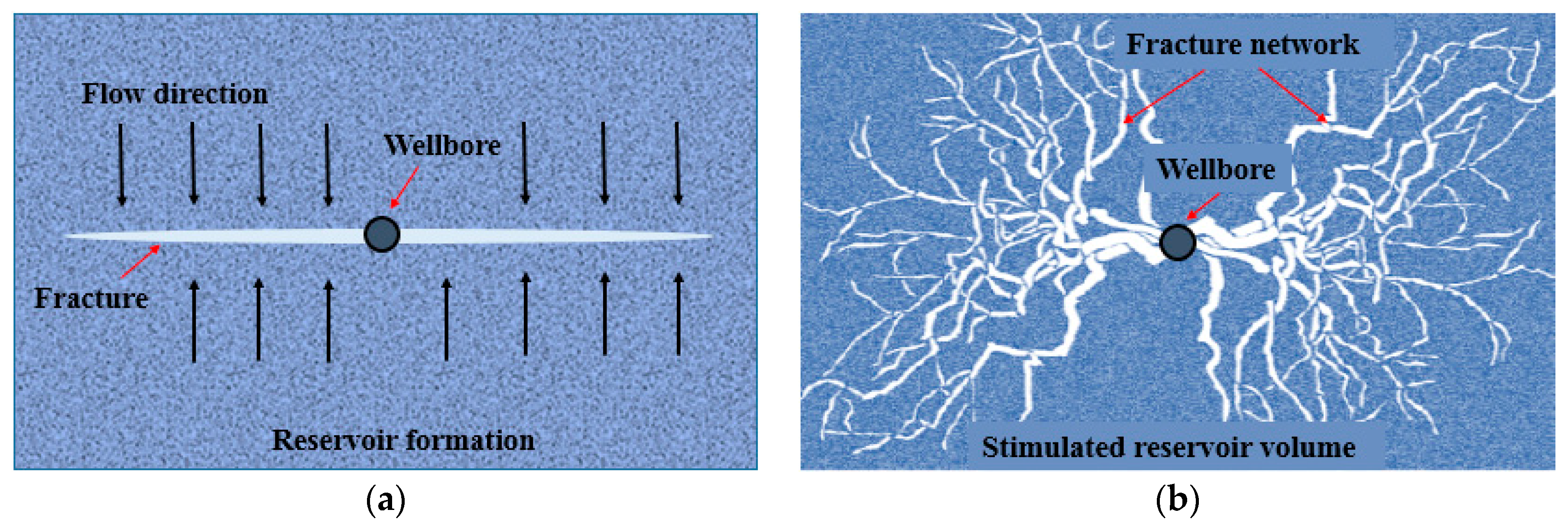
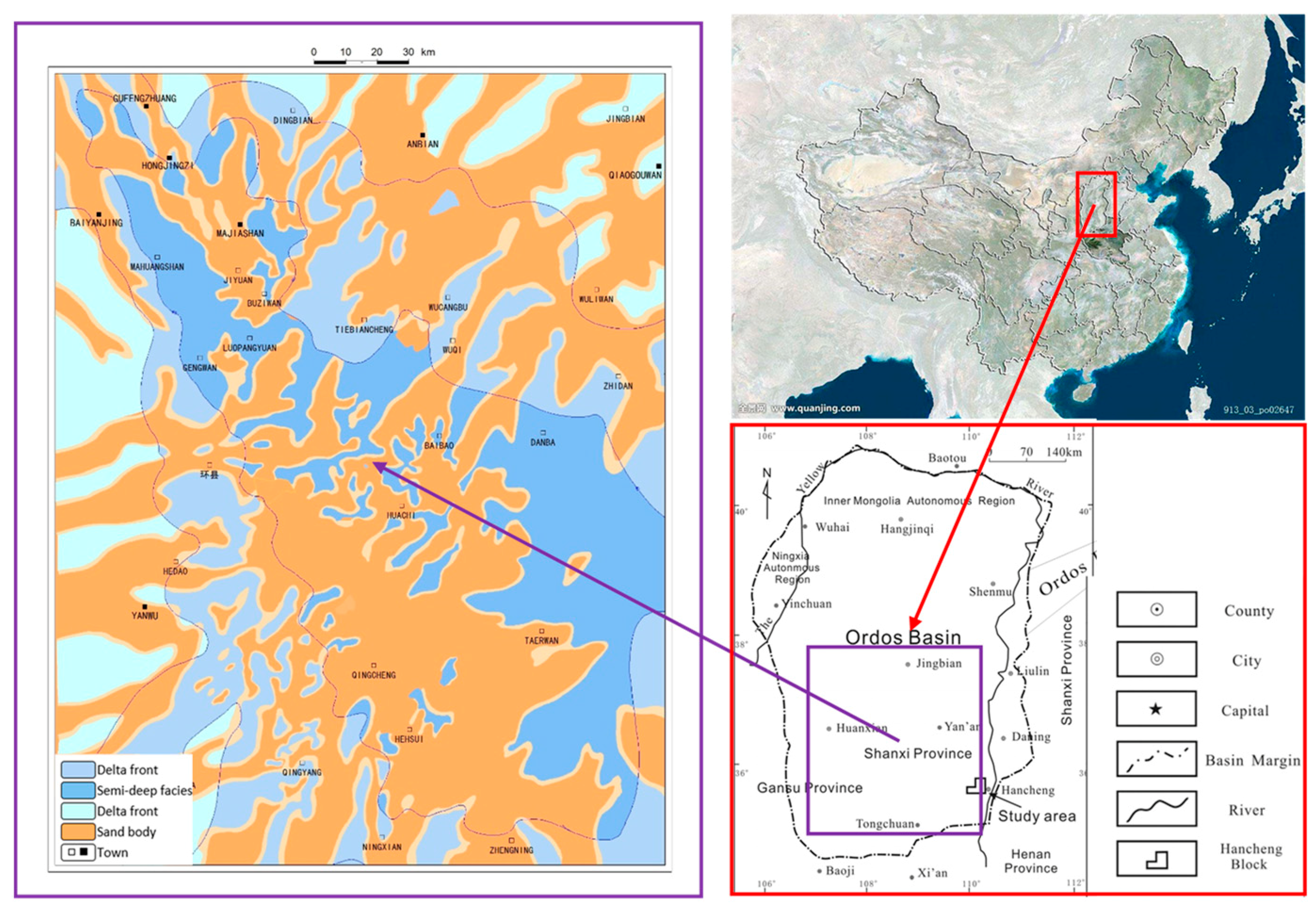
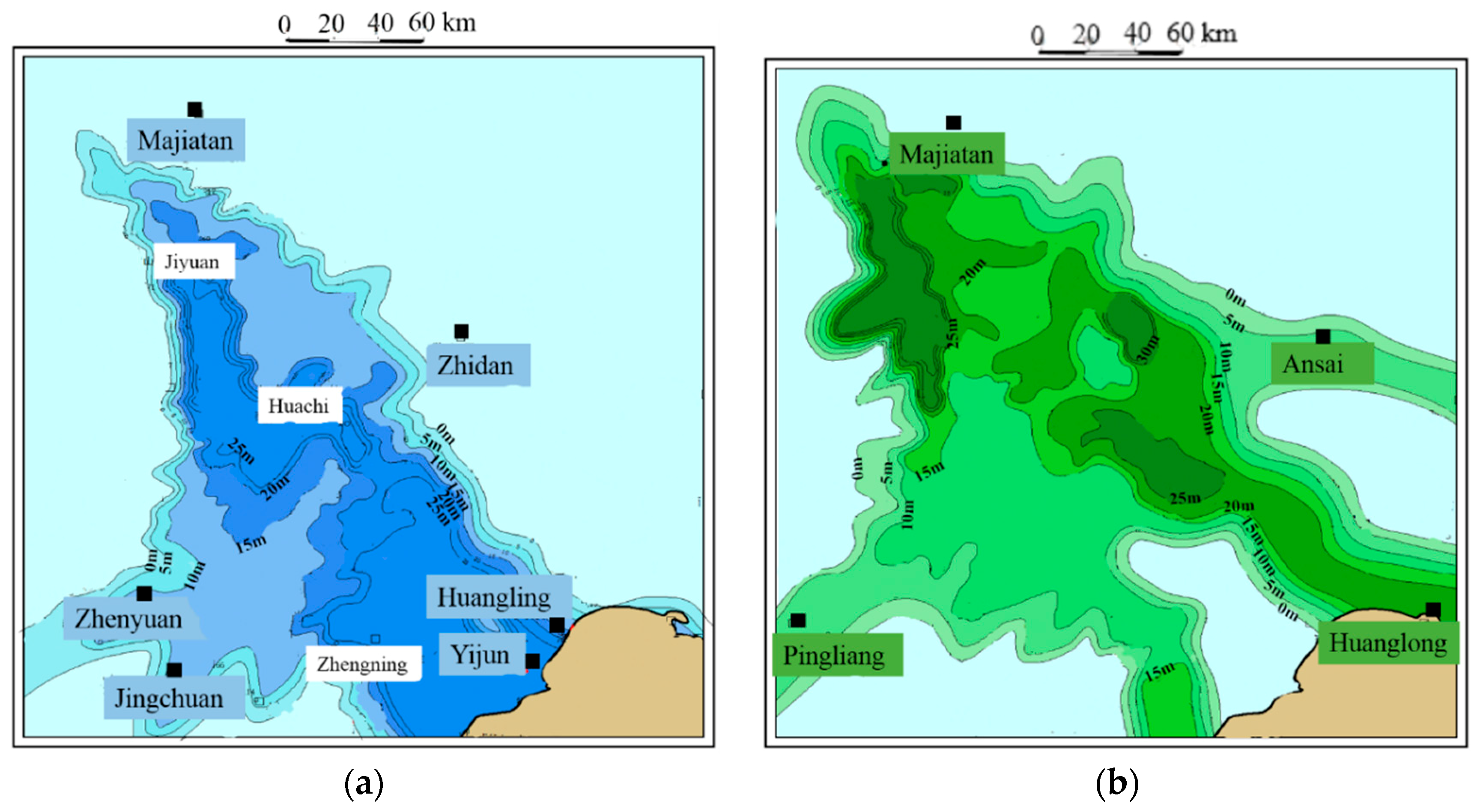
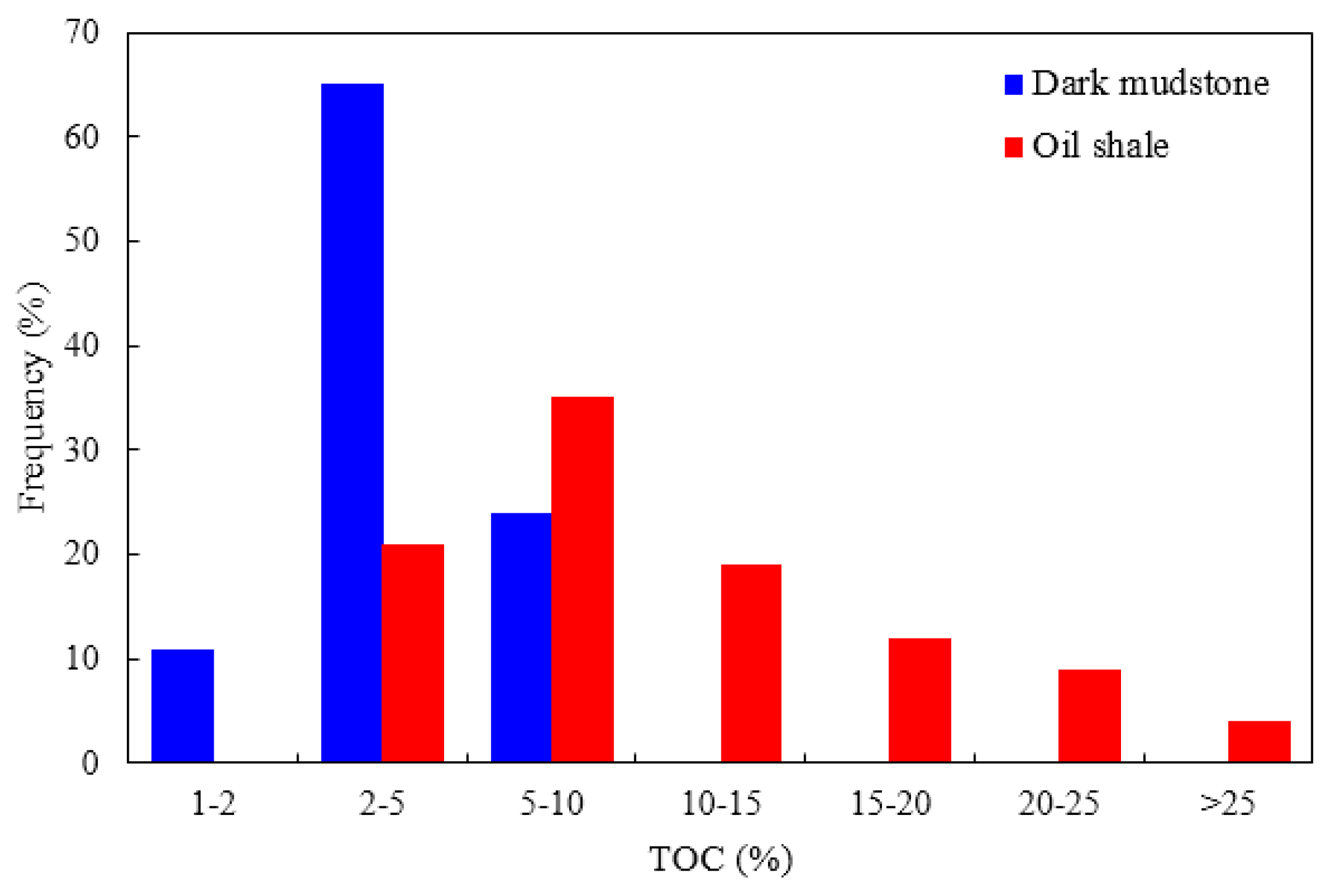
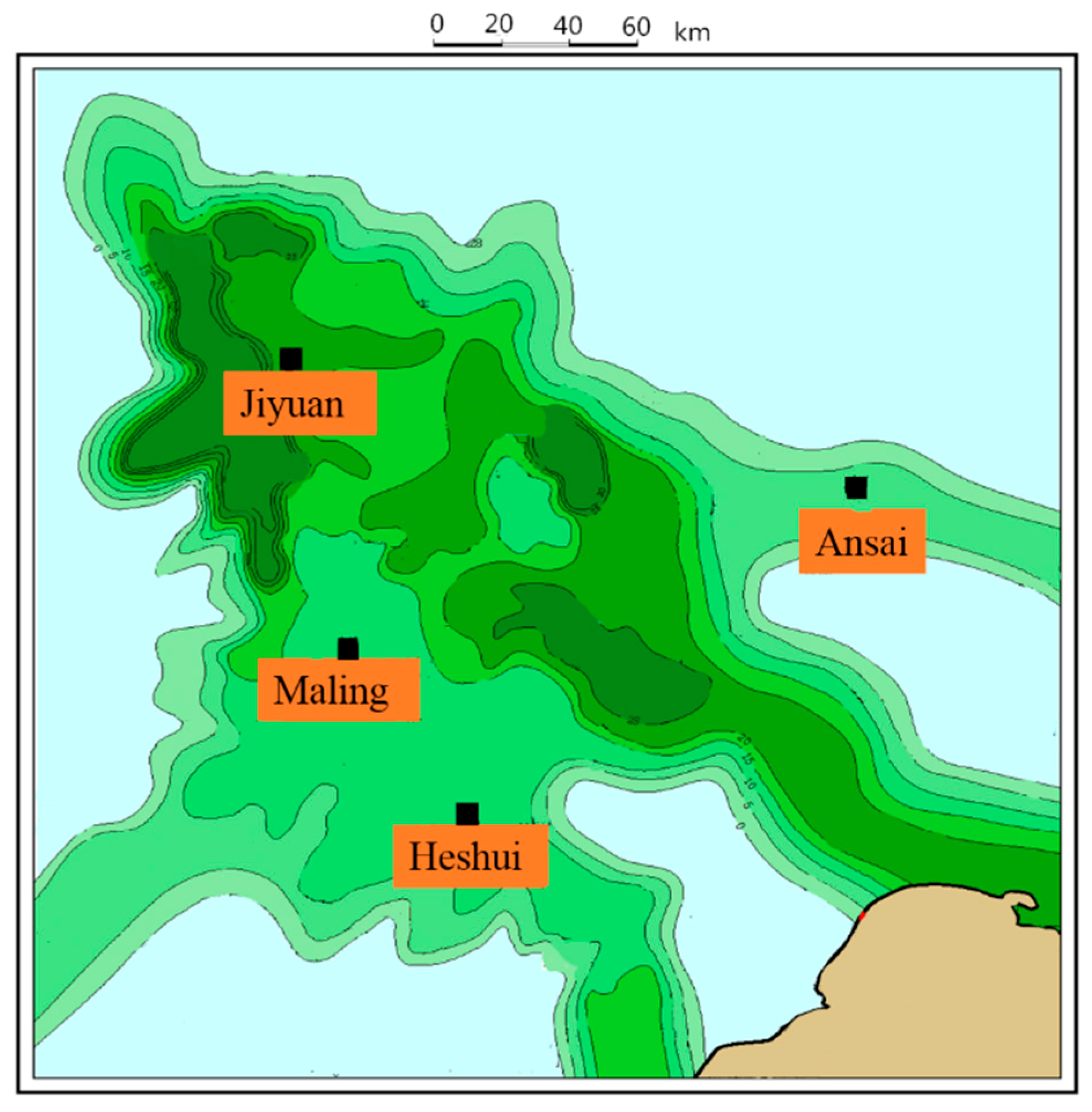

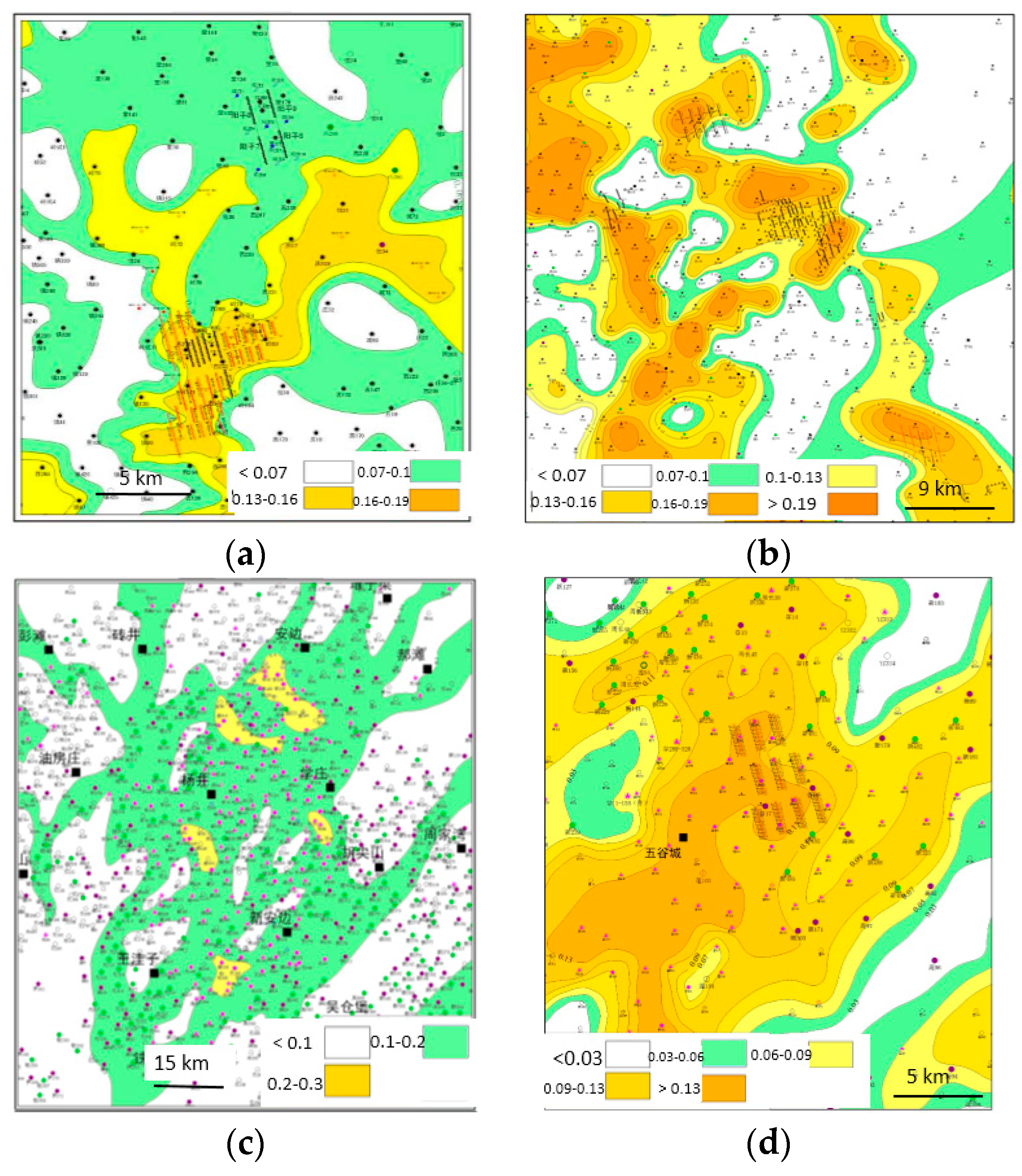
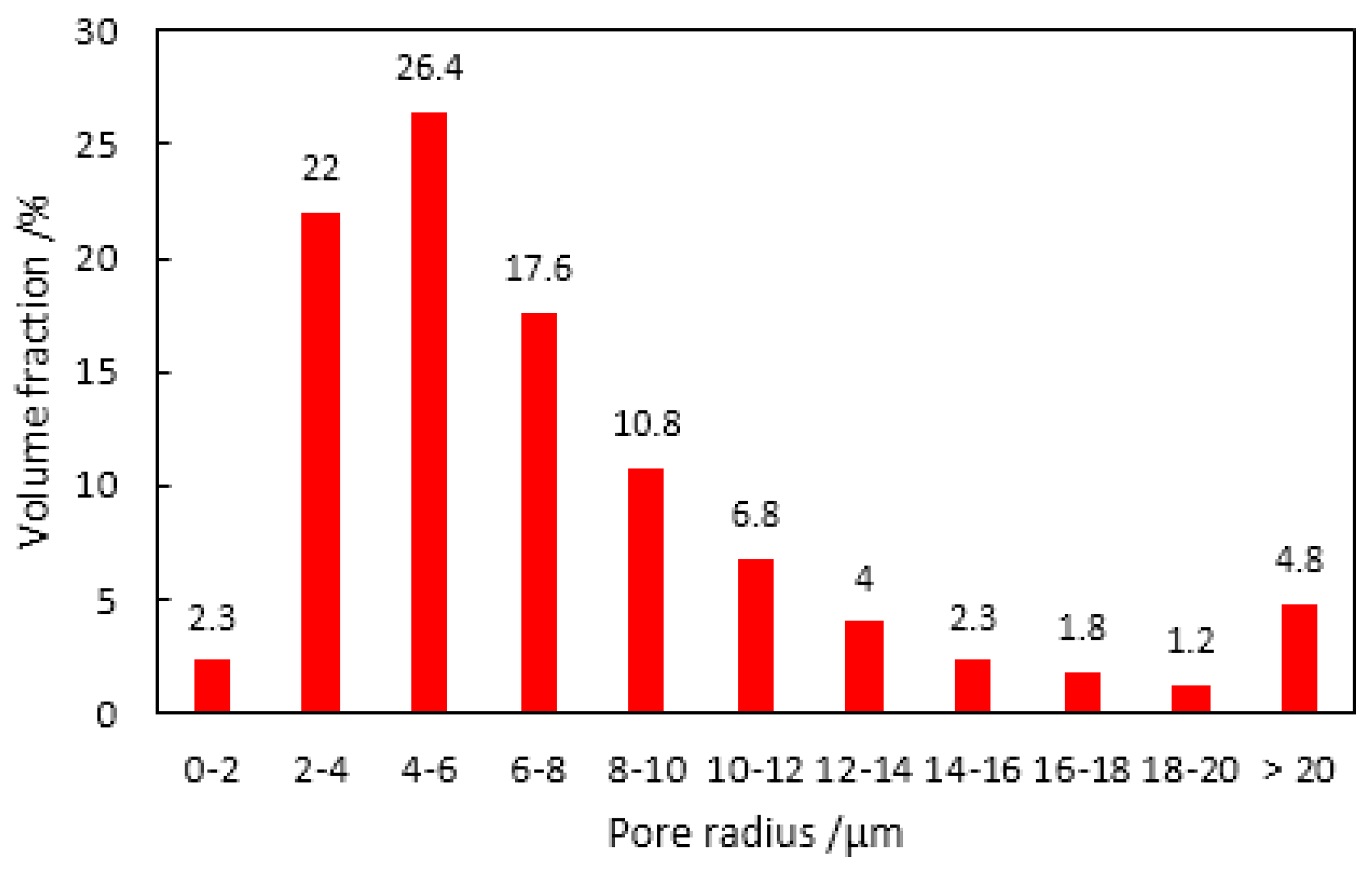
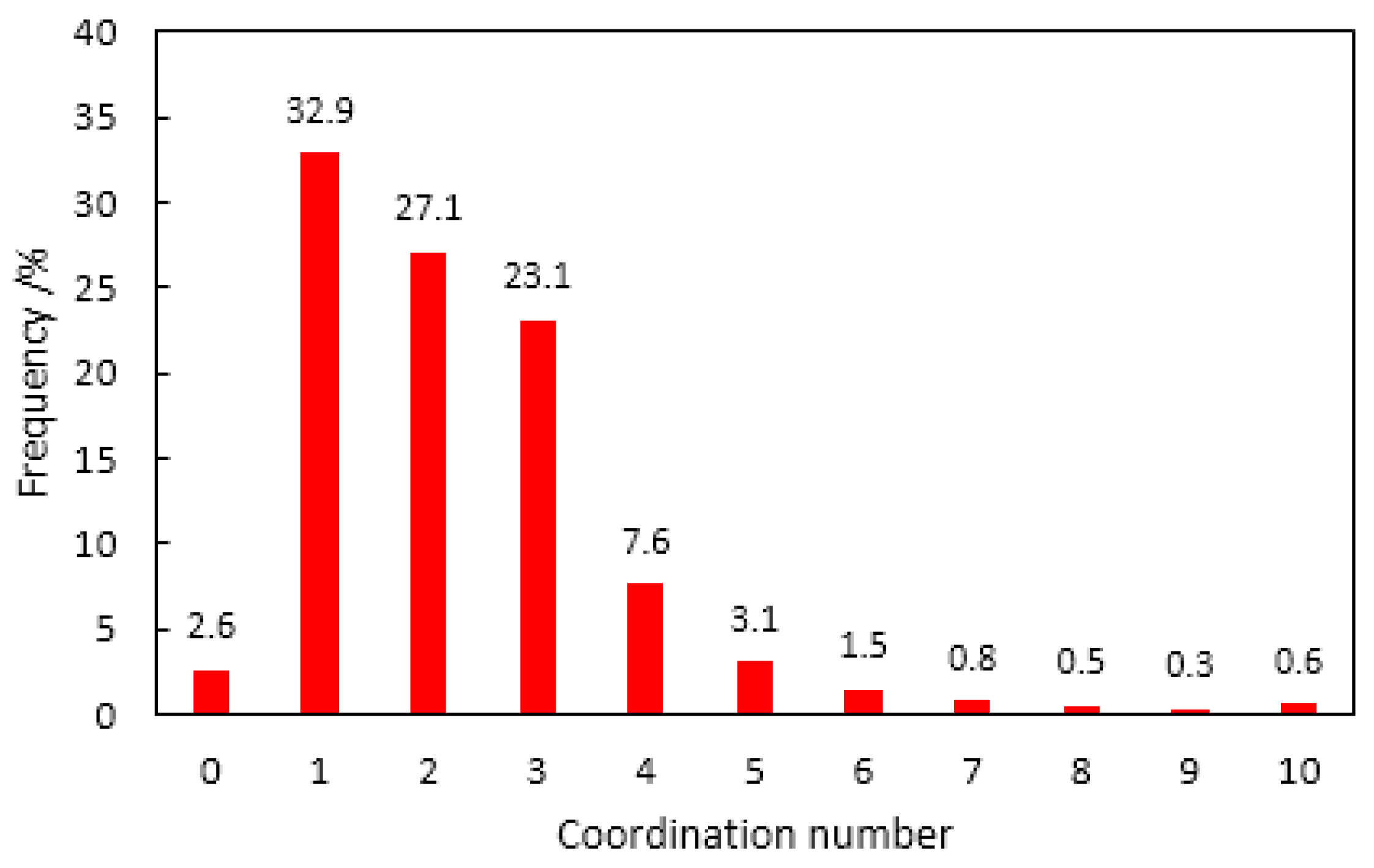
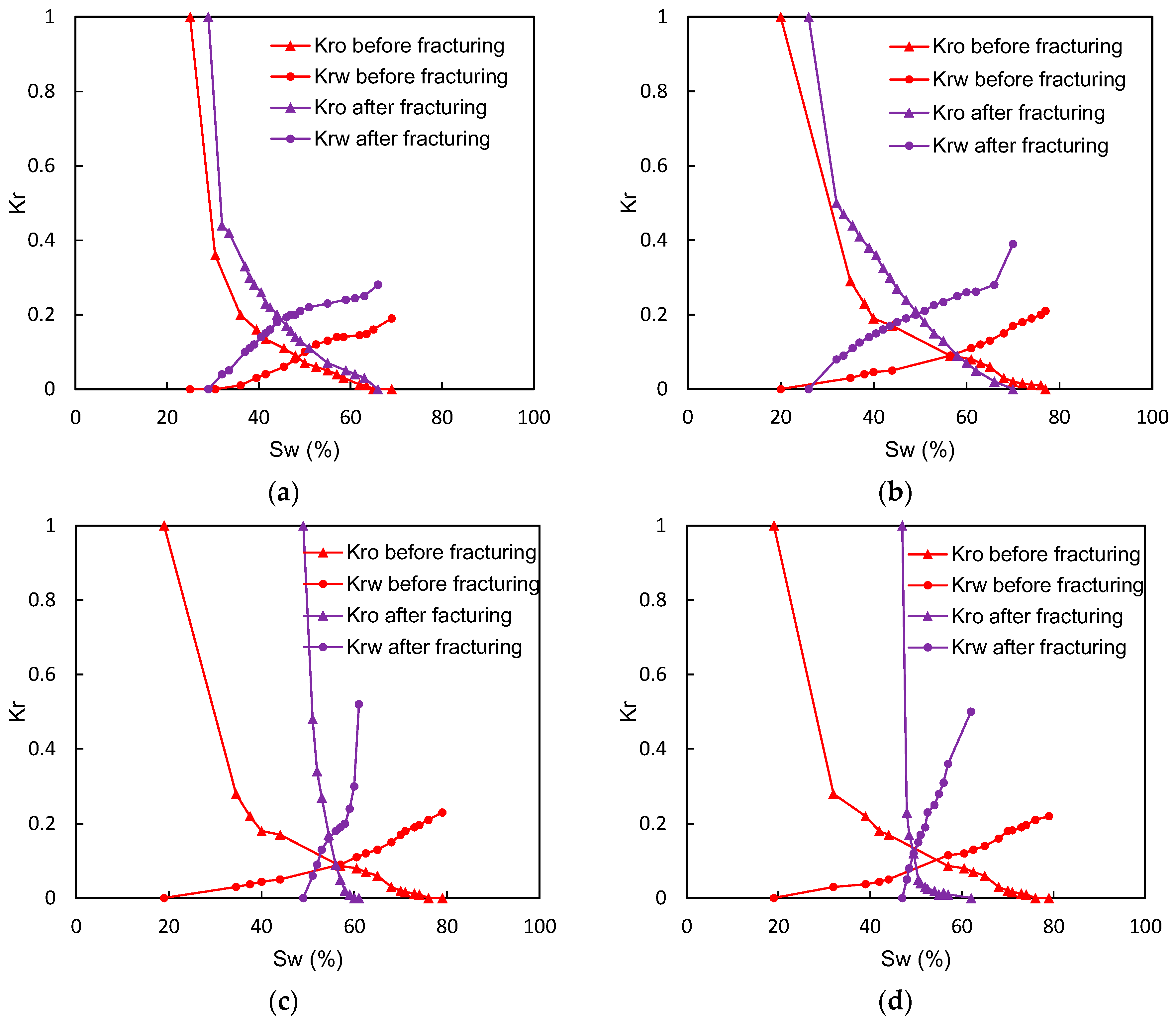
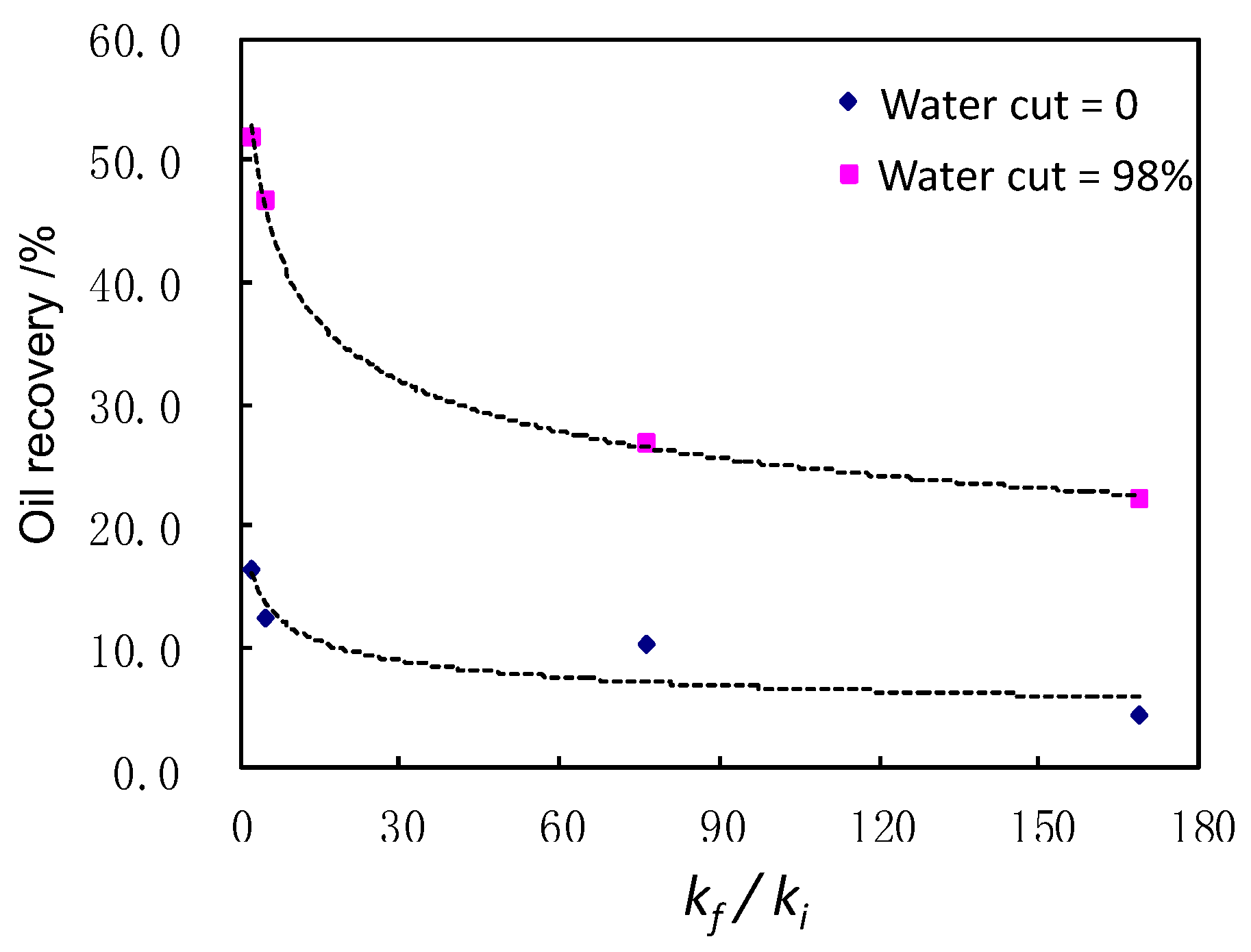
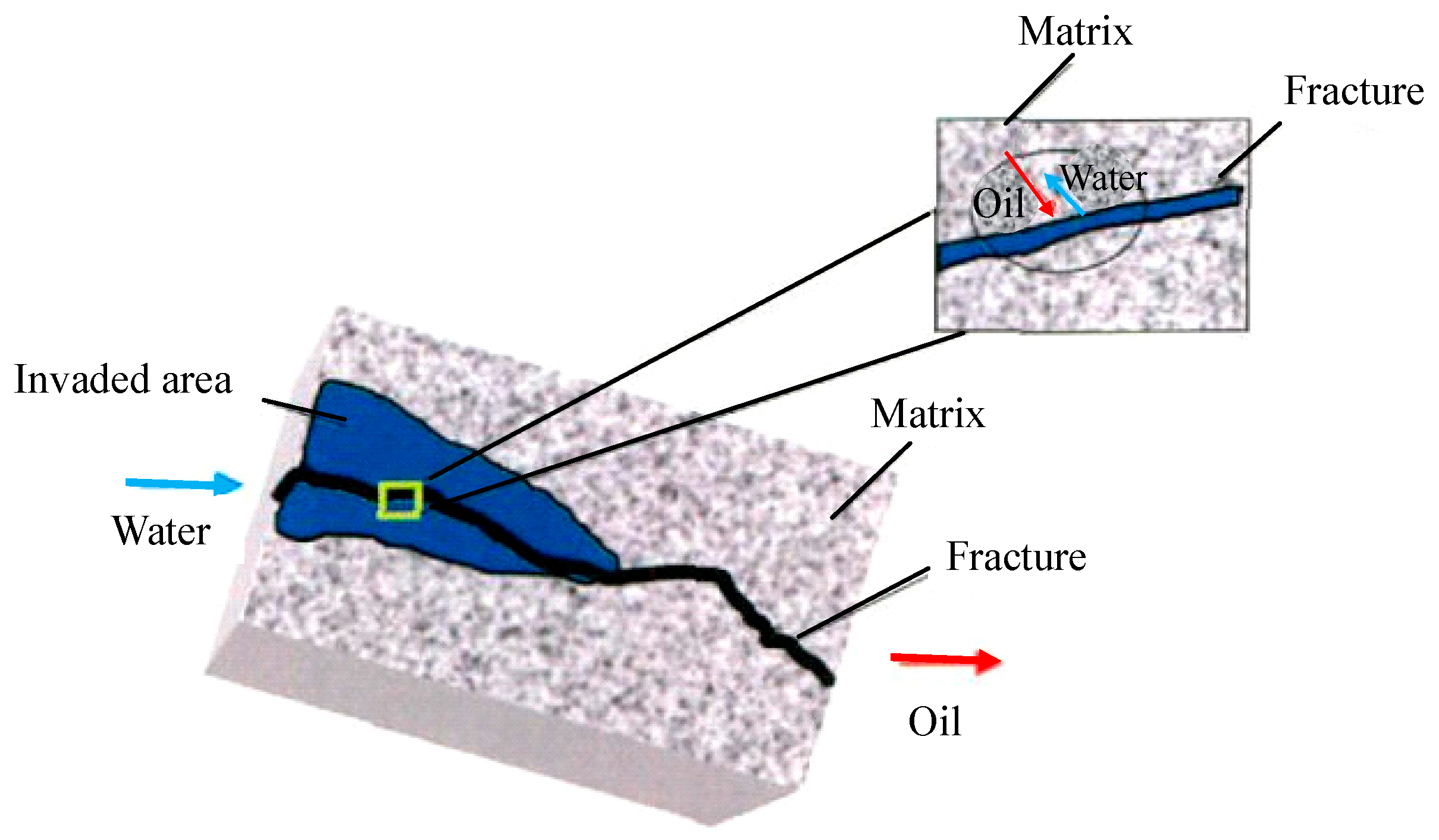
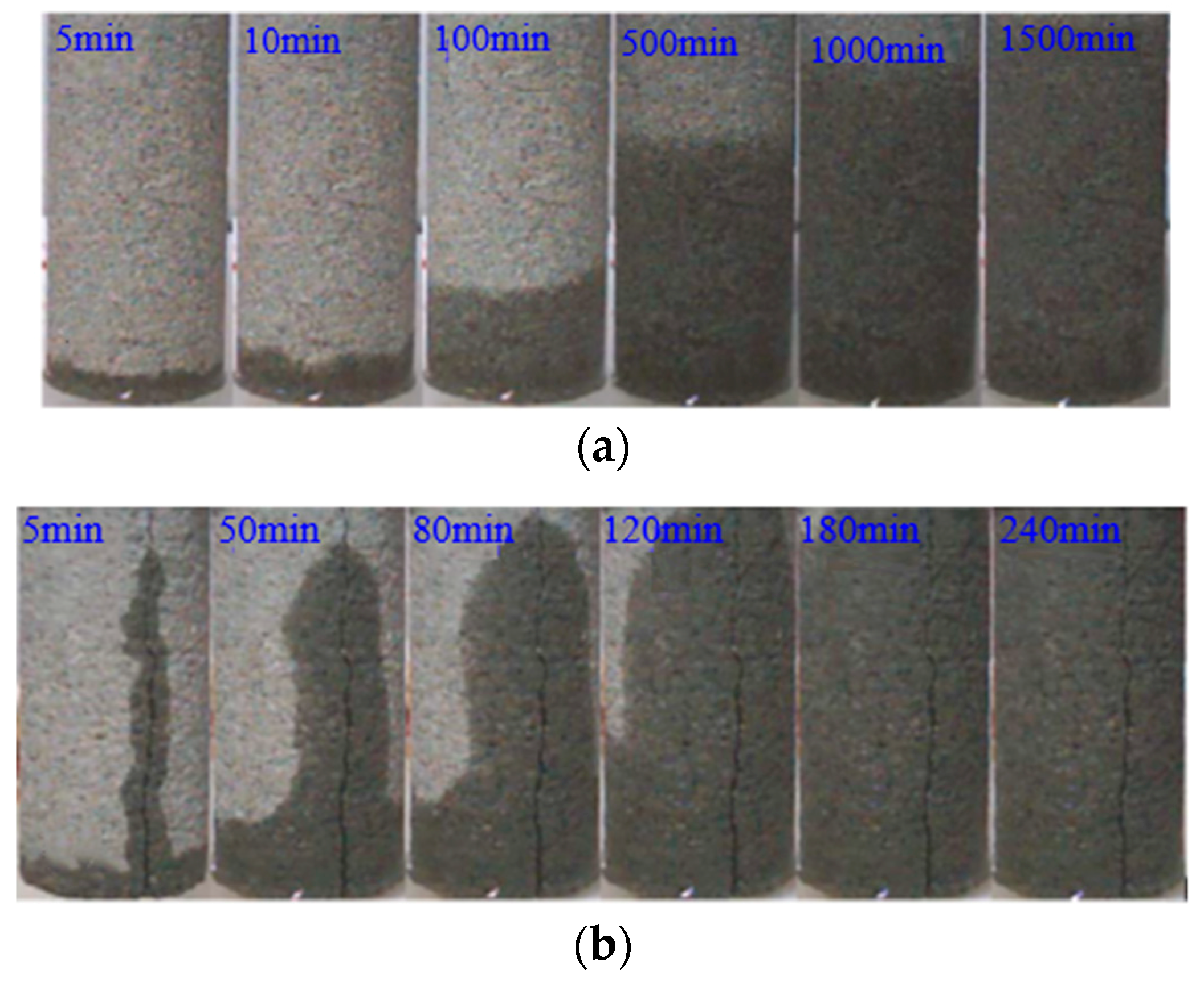
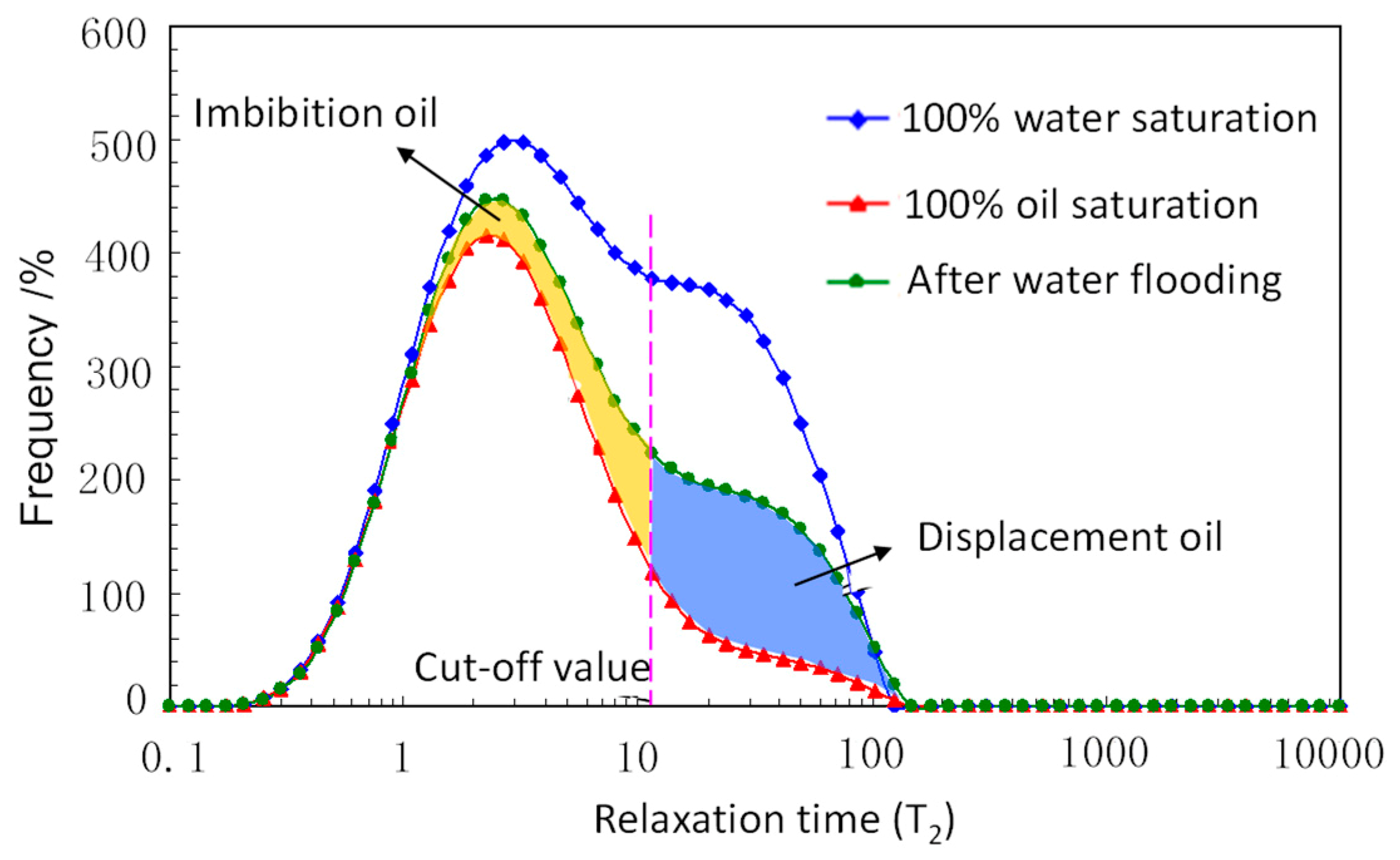
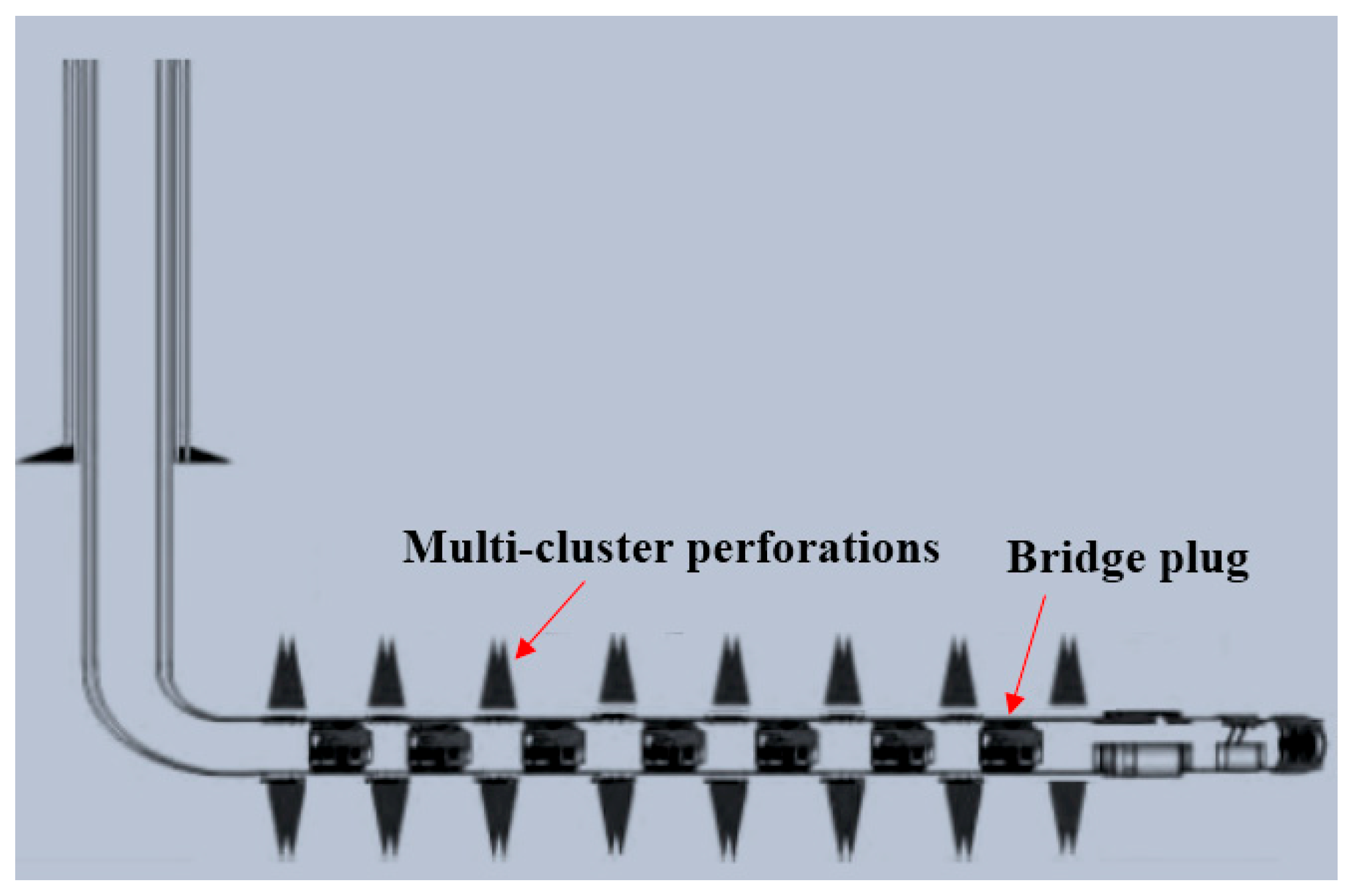

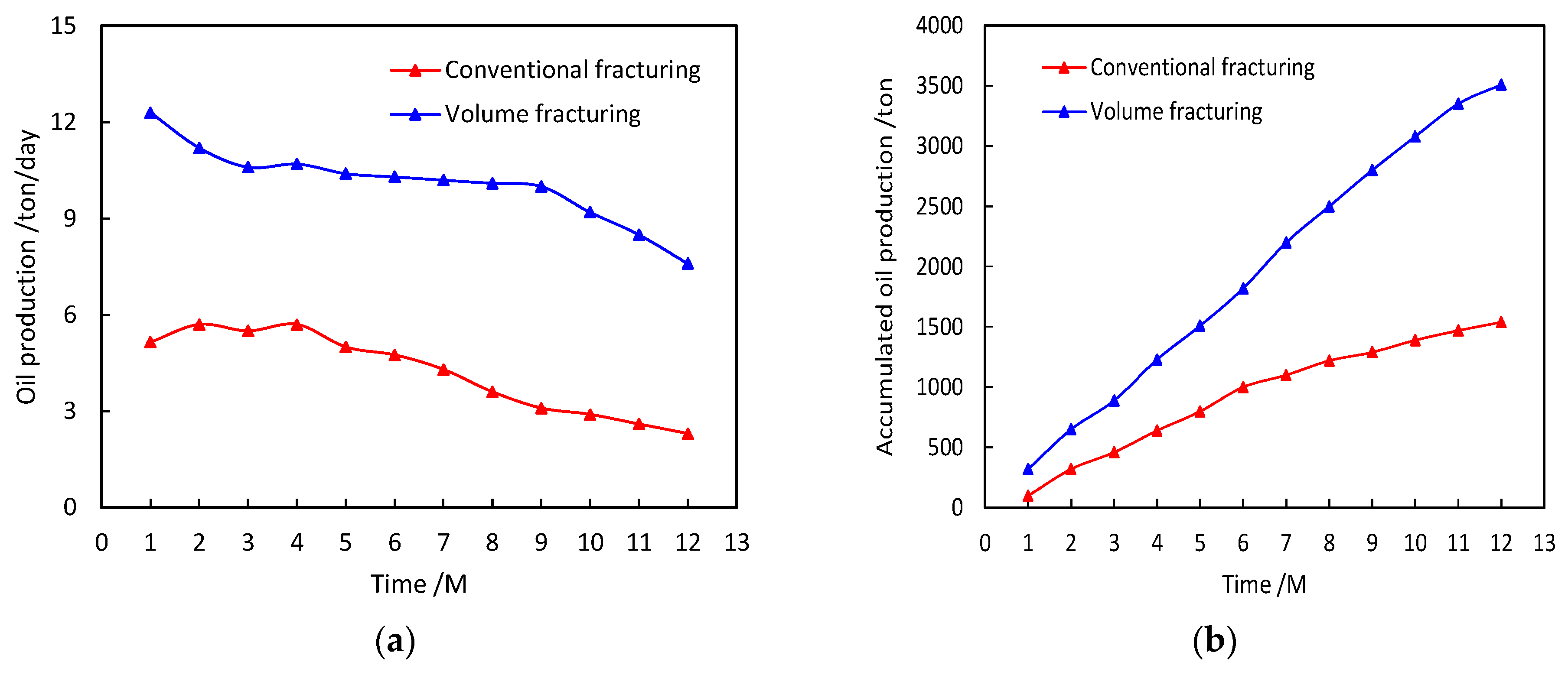
| Pilot Area | Number of Sample | Detrital Composition [%] | |||
|---|---|---|---|---|---|
| Quartz | Feldspar | Lithic Fragment | Others | ||
| Maling | 68 | 40 | 18.4 | 18.4 | 23.2 |
| Heshui | 66 | 41.2 | 20.8 | 16.9 | 21.1 |
| Jiyuanan | 123 | 25 | 38.9 | 12.3 | 23.8 |
| Ansai | 31 | 26.8 | 40.6 | 11.4 | 21.2 |
| Sum | 288 | 32.5 | 30.1 | 14.7 | 22.7 |
| Blocks | Formation Layer | Number of Core Samples | Average Porosity [%] | Average Permeability [mD] |
|---|---|---|---|---|
| Maling | Chang 72 | 2234 | 9.1 | 0.13 |
| Heshui | Chang 71 | 2575 | 8.9 | 0.14 |
| Jiyuan | Chang 72 | 3455 | 8.9 | 0.12 |
| Ansai | Chang 73 | 4067 | 8.1 | 0.11 |
| Core Number | Permeability [mD] | Porosity [%] | Total Movable Oil Saturation [%] | Recovered Movable Oil Saturation [%] | Recovery of Movable Oil [%] | ||
|---|---|---|---|---|---|---|---|
| Imbibition Effect | Displacement Effect | Imbibition Effect | Displacement Effect | ||||
| 1 | 0.014 | 7.5 | 24.42 | 9.81 | 14.61 | 40.17 | 59.83 |
| 2 | 0.014 | 6.7 | 25.45 | 13.06 | 12.39 | 51.32 | 48.68 |
| 3 | 0.015 | 7.1 | 28.42 | 12.77 | 15.65 | 44.93 | 55.07 |
| 4 | 0.034 | 10.1 | 34.21 | 13.21 | 21 | 38.61 | 61.39 |
| 5 | 0.038 | 10.7 | 34.16 | 10.77 | 23.39 | 31.53 | 68.47 |
| 6 | 0.044 | 9.9 | 35.31 | 13.23 | 22.08 | 37.47 | 62.53 |
| 7 | 0.045 | 10.2 | 37.06 | 13.48 | 23.58 | 36.37 | 63.63 |
| 8 | 0.058 | 10.5 | 35.31 | 11.01 | 24.3 | 31.18 | 68.82 |
| 9 | 0.065 | 10.3 | 32.7 | 10.12 | 22.58 | 26.00 | 58.02 |
| 10 | 0.066 | 10 | 38.92 | 10.8 | 28.12 | 28.18 | 73.38 |
| 11 | 0.067 | 11.9 | 38.32 | 9.46 | 28.86 | 24.69 | 75.31 |
| 12 | 0.096 | 11.3 | 36.87 | 6.67 | 30.2 | 18.09 | 81.91 |
| 13 | 0.102 | 11.1 | 37.72 | 5.29 | 32.43 | 14.02 | 85.98 |
| 14 | 0.104 | 10.7 | 34.81 | 3.23 | 31.58 | 9.28 | 90.72 |
| 15 | 0.108 | 11.7 | 39.04 | 5.22 | 33.82 | 13.37 | 86.63 |
| 16 | 0.135 | 10.9 | 39.79 | 2.12 | 37.67 | 5.33 | 94.67 |
| 17 | 0.143 | 8.6 | 36.01 | 4.59 | 31.42 | 12.75 | 87.25 |
| Fracturing Treatment | Well No. | Field Operation Parameters | Fracture Parameters | SRV [104 m3] | SRVvf/SRVf | ||||||
|---|---|---|---|---|---|---|---|---|---|---|---|
| Number of Well Intervals/Number of Perforation Clusters | Sand Volume [m3] | Sand Ratio [%] | Injection Rate [m3/min] | Total Injected Volume [m3] | Fracture Half-Length [m] | Fracture Width [m] | Fracture Height [m] | ||||
| Volume fracturing | 1 | 13/26 | 514.8 | 9.5 | 6.2 | 7475 | 257 | 110 | 69 | 387.1 | 2.7 |
| 2 | 13/26 | 520 | 9.3 | 6.3 | 7800 | 272 | 96 | 78 | 402.8 | 2.8 | |
| 3 | 11/22 | 496.1 | 10.6 | 6.0 | 6556 | 401 | 38 | 58 | 176.8 | 1.2 | |
| 4 | 11/22 | 438.9 | 8.5 | 6.0 | 7656 | 326 | 69 | 51 | 229.4 | 1.6 | |
| 5 | 11/22 | 482.9 | 10.7 | 6.0 | 5896 | 371 | 62 | 52 | 240.4 | 1.7 | |
| 6 | 9/44 | 1146.6 | 13.8 | 15.0 | 9135 | 386 | 162 | 41 | 515.3 | 3.6 | |
| 7 | 8/39 | 1016 | 14.3 | 15.0 | 10248 | 336 | 128 | 37 | 314.0 | 2.2 | |
| 8 | 4/11 | 259.2 | 11.0 | 10.0 | 2148 | 302 | 71 | 68 | 289.1 | 2.0 | |
| 9 | 4/12 | 312.4 | 11.0 | 9.4 | 3352 | 291 | 68 | 69 | 270.3 | 1.9 | |
| 10 | 8/32 | 475.2 | 12.9 | 7.7 | 4152 | 337 | 110 | 96 | 711.7 | 4.9 | |
| 11 | 6/24 | 520.8 | 12.4 | 8.0 | 4680 | 244 | 136 | 38 | 252 | 1.8 | |
| 12 | 5/21 | 377.5 | 13.0 | 8.0 | 3910 | 160 | 120 | 48 | 183.4 | 1.3 | |
| Conventional fracturing | 13 | 8/16 | 184 | 29.0 | 2.2 | 1223 | 160 | 90 | 50 | 144 | 1.0 |
| Pilot Areas | Number of Wells | Average Length of Horizontal Well [m] | Fluid Injection Volume per Well [m3] | Fluid Backflow Volume per Well [m3] | Backflow Rate [%] | Fluid Volume Retained in Formation [m3] | P/Pi [%] |
|---|---|---|---|---|---|---|---|
| Jiyuan | 173 | 789 | 5463 | 1672 | 30.6 | 3791 | 119 |
| Heshui | 56 | 976 | 5805 | 1623 | 28.0 | 4182 | 119 |
| Maling | 39 | 1264 | 9294 | 3263 | 35.1 | 6031 | 127 |
| Fracturing Treatment | Number of Wells | Pilot Areas | Well Length [m] | Sand Volume per Well [m3] | Injection Rate [m3/min] | Fluid Injection Volume per Well [m3] | One-year oil Production Decline Rate [%] |
|---|---|---|---|---|---|---|---|
| Conventional fracturing | 5 | Jiyuan | <1000 | 174.2 | 2.1 | 974.2 | 57.3 |
| Volume fracturing | 37 | Maling, Heshui, Jiyuan | 1500 | 763 | 7.1 | 12511 | 34.1 |
| 13 | Heshui, Jiyuan | 1000–1400 | 715 | 6.8 | 8791 | 40.5 | |
| 2 | Jiyuan | <1000 | 494.8 | 6.0 | 5241 | 37.8 |
© 2019 by the authors. Licensee MDPI, Basel, Switzerland. This article is an open access article distributed under the terms and conditions of the Creative Commons Attribution (CC BY) license (http://creativecommons.org/licenses/by/4.0/).
Share and Cite
Yu, L.; Wang, J.; Wang, C.; Chen, D. Enhanced Tight Oil Recovery by Volume Fracturing in Chang 7 Reservoir: Experimental Study and Field Practice. Energies 2019, 12, 2419. https://doi.org/10.3390/en12122419
Yu L, Wang J, Wang C, Chen D. Enhanced Tight Oil Recovery by Volume Fracturing in Chang 7 Reservoir: Experimental Study and Field Practice. Energies. 2019; 12(12):2419. https://doi.org/10.3390/en12122419
Chicago/Turabian StyleYu, Long, Jinjie Wang, Chong Wang, and Daixin Chen. 2019. "Enhanced Tight Oil Recovery by Volume Fracturing in Chang 7 Reservoir: Experimental Study and Field Practice" Energies 12, no. 12: 2419. https://doi.org/10.3390/en12122419
APA StyleYu, L., Wang, J., Wang, C., & Chen, D. (2019). Enhanced Tight Oil Recovery by Volume Fracturing in Chang 7 Reservoir: Experimental Study and Field Practice. Energies, 12(12), 2419. https://doi.org/10.3390/en12122419






